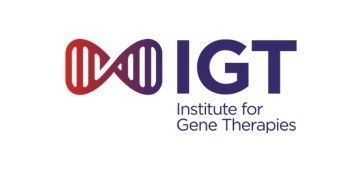
The BSF research grant program seeks to provide seed funding to young and established investigators in order to generate the preliminary data required for successful follow-on funding available from larger institutions.
Vetted by BSF’s Scientific and Medical Advisory Board (SMAB) and external subject-matter experts, grantees demonstrate BSF's unrelenting commitment to identifying potential treatments and better understanding the challenges experienced by our community of affected individuals.
2024 GRANT AWARDS

Cardiac and Skeletal Muscle Myofilament Activators for the Treatment of Barth syndrome
Leonardo Ferreira, PhD, Duke University
2024 Development Award, $99,519, over two years
Barth syndrome (BTHS) causes muscle weakness, fatigue, and difficulty with exercise. Currently, there are no approved treatments for these symptoms. Past research has shown that the ability of the heart and muscles to contract is greatly reduced in patients with BTHS. While it’s generally believed that these issues are due to a lack of energy in the cells, some researchers think that problems with special ions like calcium or cellular engines that generate force could also be contributing to the muscle issues. Most attempts to treat BTHS have focused on improving how cells make energy. However, this project proposes to improve the muscles’ ability to contract or squeeze, which could help with the energy issue and provide additional benefits. Recently, certain small molecules (and potential drug compounds) called “muscle activators” have been found to improve heart contraction and exercise tolerance in patients with heart failure not related to BTHS. These activators have also been shown to increase muscle strength and endurance in animal models and human studies. Importantly, unlike some other treatments, they improve muscle contraction without negatively affecting the cells’ energy production. The Ferreira lab proposes to study these muscle activators in a mouse model of BTHS. They will compare four groups of mice: normal mice, BTHS mice given a placebo, BTHS mice given a skeletal muscle activator, and BTHS mice given a cardiac muscle activator. The main study outcomes will be exercise capacity, heart function, muscle contraction force, and power. This approach is innovative because it targets the muscle contraction mechanism, rather than the cellular energy production. Previous treatments that focused on energy production have been successful in animals but have failed in clinical trials. The researchers hope that this new approach might help to alleviate the heart and muscle problems in BTHS.

Mechanism of cardiolipin remodeling by TAFAZZIN
David Stokes, PhD, New York University
2024 Development Award, $75,000 over two years
Barth Syndrome results from a defect in TAFAZZIN, which is a protein in mitochondria responsible for producing a special lipid called cardiolipin. When TAFAZZIN is defective, abnormal forms of cardiolipin are produced, the morphology of mitochondria is severely disrupted, and protein complexes responsible for making cellular energy are not able to assemble, giving rise to the symptoms that underly Barth syndrome. Despite this general understanding how Barth syndrome occurs, we lack fundamental understanding about the structure and function of TAFAZZIN. This project aims to develop a better understanding of this protein molecule. We propose to use a form of imaging called electron microscopy to take pictures of TAFAZZIN in order to evaluate its architecture, its interaction with cardiolipin, and related lipid molecules, as well as its interaction with the specialized membranes that compose mitochondria. Although tools of electron microscopy have improved dramatically in recent years, TAFAZZIN itself is still too small to be imaged with good resolution. Therefore, we have designed various molecules called chimeras that make TAFAZZIN bigger and that will allow us to assemble a complex that is favorable for imaging via electron microscopy. Thus, the goals of this proposal are to use bacteria to make these protein complexes and assess their functionality in producing cardiolipin as well as their suitability for electron microscopy. The best candidate will then be used for generating high-resolution images, initially in isolation and later in association with partner molecules and the membrane surface itself. In this way, we hope to contribute to understanding the mechanism of TAFAZZIN and its ability to produce the appropriate kind of cardiolipin for robust mitochondrial function. Although this work will not lead directly to a cure for Barth Syndrome, fundamental understanding of the structure and function of TAFAZZIN will be valuable in developing strategies to fight this disease.
This co-funded project was made possible by generous contributions from our affiliates Barth Syndrome Foundation of Canada and Barth Italia.

Structural analysis of a pathogenic protein-lipin complex in Barth syndrome
Patrick van der Wel, PhD, University of Groningen
2024 Development Award, $75,000 over two and a half years
Barth syndrome (BTHS) is caused by a defect in an enzyme called TAFAZZIN, that is responsible for making mature lipid (e.g. fat) molecules in mitochondria. Mitochondrial lipids in healthy cells form a structure called a membrane, which surround these cellular powerhouses (energy production), making them work. In addition to this role, these membranes also serve as a barrier to protect the rest of the cell from potentially dangerous chemicals generated during cellular power generation. In Barth syndrome, however, defective lipids reduce the stability of these vital membranes. The breakdown of these cellular barriers plays an important role in Barth syndrome, making this a potentially interesting target for future therapies. To direct drug development towards this new area of understanding, we first need to understand what goes wrong at a molecular level. In this project, we will use advanced experimental techniques to visualize these abnormal processes. Planned experiments are based on a technique similar to an MRI scan but at a molecular level. Our team will use this approach to see how the different players (proteins, lipids, potential drugs) interact with each other. In earlier work, we used these molecular scans to see how relevant proteins and lipids form a complex only when TAFAZZIN is mutated. These complexes are dangerous to the cell but are hard to visualize. Now, we will further develop our understanding of what they look like and how their presence affects the integrity of mitochondrial membrane barriers. We will also study the way that these dangerous processes are affected by a potential drug molecule that was previously found to have benefits in animals used to model Barth syndrome. Thus, we will gain an understanding on the microscopic and even molecular level of how drug-like molecules change the dysfunctional events. We hope that this information will help us better understand what goes wrong in Barth syndrome and yield insights into how molecules can be designed to correct these disease-causing processes.
This co-funded project was made possible by a generous contribution from our affiliate Association Syndrome de Barth France.

Investigating the molecular basis for the impaired mitochondrial dynamics in Barth syndrome
Halil Aydin, DVM, PhD, University of Colorado, Boulder
2024 Idea Award, $40,000, over one year
Mitochondria are essential cellular compartments in all cells responsible for making cellular energy. In heart muscle cells, mitochondria produce significant amounts of energy to maintain normal heart function. In addition to their role in energy production, mitochondria are involved in the processes driving production of amino acids (i.e. protein building blocks), lipids, and nucleotides (i.e. DNA or RNA building blocks), the transport of metabolites and ions, regulated cell death, and cellular communication; this process is known as cellular metabolism. These processes are required for continually meeting the complex energy demands and preserving balance in heart cells. Barth syndrome is an important X-linked disease characterized by cardiomyopathy and perturbations in an important mitochondrial fat/lipid called cardiolipin. Loss of mature cardiolipin or accumulation of an immature cardiolipin called monolyso-cardiolipin (MLCL) results in defects in cardiac muscle cells, which are very energy-dependent and particularly vulnerable to mitochondrial dysfunction. Cardiolipin molecules interact with several key proteins in mitochondria and play a central role in many metabolic and regulatory processes that determine cell function and fate. Optic atrophy 1 (OPA1) is a mitochondrial enzyme that targets the mitochondrial membranes in a cardiolipin-dependent manner to regulate mitochondrial structure and dynamics. Moreover, OPA1 influences many biological processes, including cellular differentiation and survival, energy production, and regulated cell death. Molecular abnormalities in OPA1’s function result in aberrant mitochondrial structure, impaired energy production, and the development of a growing list of heart disorders. Yet, the mechanisms connecting MLCL accumulation and regulation of mitochondrial form and function remain poorly understood. In this grant, we will investigate the mechanisms governing mitochondrial function by characterizing how cardiolipin and OPA1 interact and provide a critical molecular understanding how MLCL accumulation results in mitochondrial dysfunction in Barth syndrome. Together, our findings will provide a biochemical framework for understanding the role of mitochondrial dynamics in Barth syndrome and highlight an important step toward exploring the pathophysiology of Barth syndrome and related clinical therapeutics.
Generously supported by the The Science and Medicine Fund, the Iris L. Gonzalez Prize ("Prize") was launched to advance our collective understanding of genetic variants of Barth syndrome (BTHS). The Prize is an open call data challenge to interdisciplinary researchers both within and outside of the Barth syndrome field to analyze data from BSF’s acclaimed Tafazzin Human Variants Database to generate new ideas bearing the most potential to accelerate the mission of BSF.

Irma Markesina, MS, University of Rijeka
2024 Prize Winner
Barth syndrome (BTHS) is a rare genetic disorder caused by mutations in the TAFAZZIN gene, which lead to abnormalities in the protein tafazzin and the crucial mitochondrial membrane lipid called cardiolipin. This leads to a spectrum of issues including impaired muscle function, cardiac irregularities, and susceptibility to infections, significantly affecting the quality of life for individuals affected with BTHS. Our research addresses two fundamental aspects of BTHS research. Firstly, we aim to improve the accessibility to critical data provided by the Tafazzin Human Variants Database by integrating it into other widely used databases. With this, we aim to encourage and simplify future research efforts and collaborations in the study of BTHS. Secondly, we aim to interrogate the molecular consequences of specific TAZ mutations through bioinformatic analyses. Our approach involves mapping these variants with specific segments of the tafazzin protein they affect, to gain knowledge of potential molecular mechanisms of tafazzin function. By examining the three-dimensional structure of the tafazzin protein with pathogenic mutations, we aim to simulate how these mutations impact its function. With deeper understanding of these disease mechanisms, we hope to help in the development of more effective strategies in the search for a cure. Our methodology involves a combination of manual curation, automated data analysis, and molecular dynamics simulations. By addressing these critical research objectives, we aspire to contribute to the advancement of novel treatment approaches and improve outcomes for individuals affected by BTHS.

Brendan J. Floyd, MD, PhD, Stanford University
2024 Prize Runner-Up
Barth syndrome, a rare disease affecting multiple body systems, is caused by changes in the TAFAZZIN gene. This disorder can lead to heart and muscle problems, among other issues, impacting the lives of those affected. Accurate diagnosis is essential for effective treatment. However, understanding the genetic changes in Barth syndrome poses challenges due to its rarity and the tens of thousands of possible genetic variants. Current methods for analyzing these variants can be time-consuming and may delay diagnosis. To address this, our project aims to develop a new approach using a computer algorithm to analyze all possible single-nucleotide genetic variants in TAFAZZIN . By combining data from different sources, we hope to quickly identify which variants are harmful and which are harmless. This will help doctors make faster and more accurate diagnoses for patients with Barth syndrome. Furthermore, our study also aims to identify specific regions of the gene that may be more prone to harmful variations, which could lead to further research into how these variations cause disease. We will achieve these goals by combining data from published sources with the Barth syndrome database that was carefully collected by Dr. Iris Gonzalez over several decades. Using the precision of data on hundreds of individuals with Barth syndrome and the power of millions of individuals without Barth syndrome, we expect to have a better sense of which variants are important for causing disease. Overall, this project seeks to provide faster diagnosis for patients with Barth syndrome and better understanding of the molecular causes for their families and physicians.
AMERICAN HEART ASSOCIATION & BSF RESEARCH COLLABORATION
AHA/BSF Research Partnership is a funding program for investigator-initiated career development and knowledge discovery projects that directly involve Barth syndrome or cardiolipin research. Administered and peer-reviewed by AHA's annual pre-doctoral and post-doctoral fellowship program. Applications open up in September and procedures can be found on the AHA website.

Function of tafazzin in antibacterial immunity
Mack Reynolds, PhD Student, Johns Hopkins University
2023 AHA/BSF Predoctoral Fellowship Recipient
The 2023 American Heart Association/Barth Syndrome Foundation predoctoral fellowship has been awarded to Mack Reynolds, an Immunology PhD student in Dr. Mary O’Riordan’s lab at the University of Michigan (Ann Arbor, MI). Mack’s project entitled, “Function of tafazzin in antibacterial immunity,” will examine how specialized immune cells called macrophages behave during bacterial infections when there is not enough tafazzin, like in patients with Barth syndrome (BTHS). Many individuals with BTHS are impacted by severe infections like skin infections or ulcers. Many studies have evaluated how neutrophils impact infections in BTHS but further knowledge of how macrophages behave during infections is needed and may uncover new avenues for potential therapies. Mack will first look at how proteins and fats involved in macrophage metabolism (i.e. how cells make energy) differ between macrophages with normal or low tafazzin levels after the cells have been infected with methicillin-resistant Staphylococcus aureus (MRSA) bacteria, a common cause of skin infections. He hypothesizes that when tafazzin is low and cardiolipin cannot be remodeled properly in macrophages, changes in the cell’s metabolism impact inflammation and clearance of infection. This research will help us learn more about how macrophages contribute to inflammation and infection in BTHS.
Role of cardiolipin in cardiac ADP/ATP translocator activity
Nanami Senoo, PhD, Postdoctoral Fellow, Johns Hopkins University
2021 AHA/BSF Postdoctoral Fellowship Recipient
In conjunction with the American Heart Association (AHA), this two-year postdoctoral fellowship has been awarded to Dr. Nanami Senoo in Dr. Steve Claypool’s lab. Dr. Senoo will explore the structural and mechanistic relationship between cardiolipin (CL) and the nucleotide transporter ANT1. Building on recent yeast findings that CL facilitates in nucleotide transport across the mitochondrial inner membrane, Dr. Senoo will ask if a similar process is occurring in human cells via ANT1. She will further assess whether heart-specific CL abnormalities found in BTHS affected individuals impact ANT1 structure and function. Dr. Senoo’s proposed work has the potential increase our understanding of how CL functions in heart cells and answer whether ANT1 plays a role in BTHS disease biology.
STRATEGIC INITIATIVES PROGRAM AWARDS

Reina Tan, MD; Colin K. Phoon, MPhil, MD
Hassenfeld Children’s Hospital at NYU Langone, New York, NY
BSF Strategic Initiative Award, $350,000
Barth syndrome (MIM 302060) is a rare X-linked mitochondrial disease, characterized by cardiomyopathy, skeletal myopathy, neutropenia, and growth delay. It is caused by mutated tafazzin (TAFAZZIN), which results in severe deficiency and altered biochemistry of the phospholipid cardiolipin. The Barth cardiomyopathy (including the dilated, hypertrophic, and noncompaction forms) causes significant morbidity and mortality. Sudden death is hypothesized to be due to heart failure and ventricular arrhythmias. However, our understanding of the burden and progression of cardiac disease in Barth syndrome remains scant. This project is comprised of a collaborative clinical registry and retrospective/prospective observational study to determine the burden and progression of cardiac disease in a large cohort of patients with Barth syndrome, while developing prognostic markers and strategies for risk stratification. This proposal will be embedded within a large, long-term natural history study.
This co-funded project was made possible by generous contributions from our affiliate Association Syndrome de Barth France.

Optimization of Barth syndrome gene therapy
William T. Pu, MD, Professor
Boston Children’s Hospital, Boston, MA
BSF Strategic Initiative Award, Y1 $68,750; Y2 $69,300
Adeno-associated viral (AAV) vector-mediated expression of tafazzin is a promising potential therapy for patients with Barth syndrome. In mouse models of Barth syndrome, AAV-TAFAZZIN prevents and even reverses cardiac and skeletal muscle weakness. However, translation to clinical application requires optimization of the vector to maximize durability and efficacy and to minimize potential adverse reactions. In the first year, the Pu lab identified novel capsid (MyoAAV) and promoter AAV candidates with increased TAFAZZIN expression in target tissues (i.e. heart, skeletal muscle) and lower expression in off-target tissues (e.g. liver, kidney).
In the second year of funding, and in collaboration with BSF staff and consultants, the Boston Children’s Hospital team intends to select a lead vector candidate and manufacture the first research grade batch of the gene therapy material. Plans include testing the material in a mouse model lacking tafazzin specifically in the heart and skeletal muscle (learn more about conditional knockout mice here) to identify the dose level and assess the impacts on heart and skeletal muscle function (i.e. efficacy).
The first year of funding was kindly supported in part by Barth Italia through a donation from Eurizon Capital.
ONGOING GRANT PROJECTS

Riekelt Houtkooper, PhD, Amsterdam University Medical Center
2023 Idea Award, $50,000, over one year
Barth Syndrome (BTHS) is a rare, genetic disorder of lipid metabolism that affects mitochondria; the subcellular compartments in which most cellular energy is produced. It is caused by mutations in the Tafazzin gene, which leads to faulty production of an enzyme required to produce cardiolipin, an essential lipid of the mitochondrial membrane. In consequence, most people with BTHS suffer from reduced muscle function, heart disease, repeated infections, delayed growth and varying degrees of physical disability, severely compromising their quality of life.
As there is no specific treatment for this disease, current therapies for BTHS are focused on reducing and preventing complications. These include physical therapy to improve muscle tone, antibiotics to prevent or treat bacterial infections, and administration of medication to prevent heart failure. Exploring new and better therapeutic avenues to effectively treat BTHS is of outstanding relevance.
Nicotinamide adenine dinucleotide (NAD+) is an essential molecule for energy production in mitochondria, and crucially required for proper cell functioning. We have demonstrated that a molecule called nicotinamide riboside (NR), a vitamin B3 homolog that can make NAD+, is able to rescue exercise tolerance and mitochondrial function in fruit flies with BTHS. Building on these results, we aim to validate this potential therapy in mice with BTHS. To do so, we will feed BTHS mice with an NR-enriched diet for two months, during which their exercise capacity and heart function will be monitored. We will also run biochemical and molecular analyses to understand how NR acts at a molecular level.
With this project we aim to shed light on whether NR supplementation is a valid potential therapy for BTHS

lnduced Pluripotent Stem CelIs to Study Neutrophil Development in Barth Syndrome
Taco Kuijpers, MD, PhD, Amsterdam University Medical Center
2023 Idea Award, $49,854, over a year and half
Awarded to Dr. Taco Kuijpers, this project is dedicated to investigating primary white blood cells, specifically neutrophils and their progenitors from Barth syndrome (BTHS) patients using a new approach. Instead of culturing these white blood cells from bone marrow stem cells, this project will generate induced pluripotent stem cells (iPSC lines) derived from skin cells. This approach allows studies of neutrophil development without repeated bone marrow samples or blood samples to better understand neutrophil dysregulation in BTHS. These cell cultures will be subjected to in-depth phenotyping and functional studies to pinpoint the exact reason for the low output of mature neutrophils and previously established alterations in surface markers. In addition, the group will test whether a compound that appears able to improve the developmental state in a BTHS fruitfly model can impact or reverse this low output and shortage of neutrophils in BTHS patient-derived iPSCs.

Elucidating Cardiolipin Immune Dysfunction in Barth Syndrome
Kate Schroder, PhD, The University of Queensland
2023 Idea Award, $50,000, over one year
Barth Syndrome (BTHS) is a genetic disease that can cause life-threatening infections or heart failure. While mechanisms of heart failure in BTHS are well studied, how BTHS causes immune dysfunction to cause susceptibility to infection is poorly understood. We discovered that a key lipid that is dysregulated in BTHS is an important immune regulator. This project will investigate whether dysregulation of this immune regulator in BTHS is linked to immune dysfunction in these patients. This project will form a strong foundation for future mechanistic studies of immune dysfunction in BTHS, and provide new drug targets to prevent BTHS susceptibility to infection and immune dysregulation, thereby improving patient health and extending lifespan.
This co-funded project was made possible by a generous contribution from our affiliate Barth Syndrome Foundation of Canada

Optimizing Cardiac Energetics in Barth Syndrome
John Ussher, PhD, University of Alberta
2023 Development Award, $100,000 over two years
The goal of our research is to determine whether improving the heart’s ability to produce energy in a child with Barth syndrome may be an exciting method to reduce the risk for heart disease and heart failure in these children. To be specific, we hypothesize that an energy source made by the liver, the ketone body, may be a better energy source for the heart to metabolize for energy in a child with Barth syndrome. Therefore, increasing ketone body metabolism in the heart may be a beneficial strategy to reduce the risk for heart failure in Barth syndrome children. Recently, a unique genetically modified mouse has been produced for scientific research that lacks the gene/protein (TAFAZZIN/Tafazzin) that malfunctions or is missing in people with Barth syndrome, and these mice also develop heart failure. We will breed these genetically modified mice in our lab, and provide them with a dietary supplement (ketone ester drink), or treat them with a drug (empagliflozin), both of which increase ketone body levels in the blood, which will increase ketone body metabolism in the hearts of these mice. We will test whether the ketone ester drink or drug treatment improve heart function in these mice and prevent heart failure. If our hypothesis is correct, our research will suggest that boosting ketone body metabolism in the heart might be an effective way to prevent heart failure in Barth syndrome children and improve their chances of surviving into adulthood, while also improving their quality of life.

Investigating the basis of neutropenia in Barth syndrome
Borko Amulic, PhD, University of Bristol
2022 Idea Award, $49,999, over one year
Awarded to Dr. Borko Amulic and Dr. Colin Steward, this project takes advantage of proximity to the National Health Service (NHS) Barth Syndrome Service at Bristol Royal Hospital for Children to investigate primary neutrophils and their progenitors from BTHS patients. With a dual approach to investigating neutrophil dysregulation in BTHS, it will first utilize a newly established system to investigate development and differentiation of BTHS neutrophils from circulating progenitor stem cells under conditions of inflammatory and metabolic stress. Secondly, it will build on previously obtained data to examine how hyperdegranulation affects the interaction of BTHS neutrophils with the endothelium both ex vivo and in a mouse model of Barth syndrome.
This project’s funding was made possible by generous contributions from our affiliates Barth Syndrome Foundation of Canada and the Barth Syndrome UK.

Feeding the starving heart in Barth Syndrome
Adam J. Chicco, PhD, Colorado State University
2022 Development Award, $82,400 over two years
Awarded to Dr. Adam J. Chicco, this project will test the hypothesis that providing alternative fatty acid fuels that bypass the long chain fatty acid (LCFA) oxidation system will improve exercise tolerance and cardiac functional capacity in Barth syndrome (BTHS) patients. Using the two tafazzin-deficient mouse models of BTHS currently available, this effort will determine if therapeutic doses of a synthetic shorter-chain fatty acid supplement recently FDA-approved for treatment of LCFA oxidation disorders (triheptanoin; a 7-carbon medium-chain triglyceride) improves exercise capacity, cardiac function, and mitochondrial metabolism. If results of these pre-clinical studies are positive, they will provide the basis for exploring a clinically feasible and inexpensive treatment for improving functional capacity and quality of life in BTHS patients.
This project’s funding was made possible by the generous support of the Will McCurdy Fund for Advancement in Therapies for Barth Syndrome.

ALCAT1 as a novel target for the treatment of cardiomyopathy in Barth syndrome
Jun Zhang, PhD, University of Texas Health Science Center at San Antonio
2022 Development Award, $100,000 over two years
Awarded to Dr. Jun Zhang, the proposed studies will determine the role and underlying mechanisms of ALCAT1 as a key regulator of mitochondrial dysfunction in Barth syndrome, further building on past BSF support for this hypothesis. This project will also validate inhibition of ALCAT1 by a small molecule inhibitor as a novel and potential treatment for cardiomyopathy in Barth syndrome.
This project’s funding was made possible by the generous support of the Will McCurdy Fund for Advancement in Therapies for Barth Syndrome.
Activating Pyruvate Dehydrogenase Complex to Improve Barth Syndrome Cardiac Function
Charles E. McCall, PhD, Professor, Wake Forest University Health Sciences
Development Award, $100,000 over two years
Awarded in 2021 to the multi-disciplinary team of Professors Charles McCall, Miriam Greenberg, Peter Stacpoole, and Boone Prentice, this Development Award will investigate the drug dichloroacetate‘s (DCA) impact on the heart-specific TAFAZZIN knockout mouse. Involving animal research at Wake Forest University (McCall), cellular and cardiolipin expertise from Wayne State University (Greenberg), and clinical experience and research tools via the University of Florida (Stacpoole & Prentice), this mouse project asks whether DCA can be repurposed as an investigational drug and potential therapy for Barth syndrome.
This project’s funding was made possible by the generous support of the Will McCurdy Fund for Advancement in Therapies for Barth Syndrome.
Mauro Corrado, PhD, University of Cologne
Idea Award, $50,000 over two years
Awarded to Dr. Mauro Corrado in 2021, this Idea Award builds upon novel findings that cardiolipin plays a key role in the development and function of T cells - immune cells that play a role in adaptive immunity. Utilizing mouse models, Dr. Corrado is focusing on the implications of impaired immune function and its impact on the health and function of mouse muscle cells. Given the immune issues faced by affected individuals, this effort has the potential to provide a more holistic view of immune dysfunction in Barth syndrome.
This project’s funding was made possible by the generous support of the Paula and Woody Varner Fund.
Surveying TAZ genetic interactions and mutational landscape in human cells
Jason Moffat, PhD, Professor, University of Toronto
Idea Award, $50,000 over one year
Awarded in 2021 to Prof. Jason Moffat and Prof. Charles Boone of the University of Toronto, this Idea Award enables us to better understand the TAFAZZIN gene, in and out. Inwardly, Dr. Moffat proposes to connect changes in gene sequences to their functional consequences on protein function. Known as deep mutational scanning, this effort has the potential to expand our understanding about gene variants in our community. Outwardly, via a CRISPR-mediated genome-wide screen, Dr. Moffat proposes to identify genes that interact with TAFAZZIN and recorded gene variants. By increasing our understanding of TAFAZZIN interactions as well as gene variants and mutations’ impact on tafazzin protein function, the research team seeks to identify insights into the variable manifestations, or phenotype, of Barth syndrome.
This project’s funding was made possible by generous contributions from our affiliates Barth Syndrome Foundation of Canada and the Barth Syndrome UK.
Stacey E. Reynolds, PhD, Assistant Professor, Virginia Commonwealth University
Idea Award, $50,000 over one year
Awarded to Associate Prof. Stacey Reynolds in 2021 and in collaboration with Assistant Prof. Virginia W. Chu of Virginia Commonwealth University, this Idea Award aims to capture the fatigue experienced and voiced by our affected individuals. Dr. Reynolds’s team will first conduct interviews with affected individuals, siblings, and parents to capture the impact of fatigue on daily living. Dr. Chu will then capture individuals’ self-assessment of fatigue in real-time using a novel phone application and map those ratings onto activity data collected by wrist-worn watches worn by affected individuals. This mixed-methods approach aims to qualify and quantify fatigue in our community and is in direct response to the narratives shared during BSF’s 2018 Patient Focused Drug Development meeting with the U.S. FDA.
This project’s funding was made possible by the generous support of the Will McCurdy Fund for Advancement in Therapies for Barth Syndrome.
Development of mitochondria-targeted peptide compounds as Barth syndrome therapeutics
Nathan Alder, PhD, Associate Professor, University of Connecticut, Storrs, CT
Award - $50,000 over 1-year period
Awarded to Associate Professor Nathan Alder of University of Connecticut, this project will first ask how Szeto-Schiller compounds impact mitochondrial function – of which elamipretide is a member. These findings will then allow Dr. Alder and his team to focus on developing Szeto-Schiller compounds tailored to treat Barth syndrome. The potential impact of this project stems from Dr. Alder’s ideal expertise in cell-free model systems, alongside our increasing knowledge of the safety and efficacy (or positive impact) of elamipretide in our affected individuals. This project’s funding was made possible by the generous support of the Will McCurdy Fund for Advancement in Therapies for Barth Syndrome.

Deuterated polyunsaturated fatty acids as protective therapy in the treatment of Barth syndrome
Catherine F. Clarke, PhD, Professor and Chair, University of California at Los Angeles, Los Angeles, CA (UCLA)
Award—US $100,000 over 2-year period
Barth syndrome is uniquely associated with a deficiency and alterations in cardiolipin, a phospholipid that is an important component of the inner mitochondrial membrane. This deficiency and alterations in cardiolipin result in damage to the cell. Providing a “disease-resistant” cardiolipin to increase and replace the usual molecules may be therapeutic for individuals with Barth syndrome.
To test this hypothesis, Dr. Catherine Clarke of UCLA will apply this unique therapeutic idea by using chemically modified lipids to reduce the amount of cellular damage produced by deficient and altered cardiolipin.
If this novel specific lipid-replacement therapy preserves mitochondrial function, it could protect cells against the oxidative stress conditions known to exist in people with Barth syndrome.
This grant is made possible by support from the Will McCurdy Fund for Advancement in Therapies for Barth Syndrome
Investigation of a new nutraceutical for treatment of Barth Syndrome
Robin E. Duncan, PhD, Associate Professor, University of Waterloo, Waterloo, ON, Canada
2020 Award - $41,580 over 2-year period
Awarded to Associate Professor Robin Duncan of University of Waterloo, this project will assess the therapeutic potential and activity of a nutraceutical (a possible supplement therapy that is available without prescription) in preserving the viability of Barth syndrome cells. Following up on early results that this nutraceutical has the ability to help Barth syndrome cells survive at the same levels as normal cells, Dr. Duncan and her team will try to understand what is the process that helps preserve these cells, and further expand her research into the Taz knockout (TAZKO) mouse model. As an early stage research effort (aka preclinical study), this research aims to provide the foundational understanding of this nutraceutical and its impact on Barth syndrome. This project’s funding was made possible by generous contributions from our affiliates Barth Syndrome Foundation of Canada and the Barth Syndrome UK.
Structural and Biophysical Studies of Tafazzin
Steven Glynn, Associate Professor, Stony Brook University, Stony Brook, NY
2020 Award - $50,000 over 2-year period
Awarded to Associate Professor Steven Glynn of Stony Brook University, whom is a trained crystallographer (someone who purifies and generates protein crystals for structural studies). Dr. Glynn will apply his experience towards purifying normal and variant versions of Taz from yeast. If successful, he will determine what normal Taz looks like and how variant versions look and function differently. This important discovery science project will shed light on how some of the TAZ variants we know of and track impact Taz activity. As every biochemistry student learns early on – protein structure dictates function. This project’s funding was made possible by a generous contribution from our affiliate Association Syndrome de Barth France.

Cardiolipin Requirement for Mitochondrial Calcium Import
Vishal Gohil, PhD, Associate Professor, Texas A&M University, College Station, TX
Award - $50,000 over 1-year period
Awarded to Associate Professor Vishal Gohil of Texas A&M University, this discovery science project aims to understand how levels of calcium, mature cardiolipin (CL), and energy generation play a role in Barth syndrome. By using the highly modifiable yeast system, Dr. Gohil will probe what happens with reduced levels of mature CL (which is what happens in Barth syndrome) and its subsequent impact on the amount of calcium inside and outside of the mitochondria. Studying this relationship may further shed light on why Barth syndrome mitochondria produce lower levels of energy.

Resolution of the underlying basis for the impaired oxidation of fatty acids in Barth syndrome
Riekelt Houtkooper, PhD, Professor, Amsterdam Medical Center, Amsterdam, The Netherlands
Award—US $50,000 over 1-year period
Barth syndrome is a unique mitochondrial disease. Another type of mitochondrial disease that has common attributes with Barth syndrome is fatty acid oxidation (FAO) disorders. This is a group of diseases that affect approximately 1 in 10,000 births making it 30 times more numerous than Barth syndrome.
Dr. Riekelt Houtkooper of Amsterdam Medical Center will investigate how closely Barth syndrome resembles fatty acid oxidation disorders. Dr. Jan Dudek of University Medical Center Würzburg will collaborate with Dr. Houtkooper’s group to study the relationship of fatty acid oxidation and heart failure as it relates to Barth syndrome.
These projects aim to explain why underlying defective mechanisms in Barth syndrome impair the body’s ability to use fatty acids properly. Similarly, researchers aim to resolve the cause for the diminished oxidation of fatty acids in Barth syndrome with the ultimate goal of informing novel therapeutic strategies.
This grant is made possible in part by support from Association Syndrome de Barth France

Prenatal cardiac phenotype as a platform for testing Barth syndrome therapies
Colin Phoon, MPhil, MD, Associate Professor, New York University School of Medicine, New York, NY
Award: US $70,000 over 2-year period
Partial funding for this award was provided by the Paula and Woody Varner Fund

Essential activities of Tafazzin that are independent of cardiolipin remodeling
William T. Pu, MD, Professor, Boston Children's Hospital, Boston, MA
Award - $50,000 over 1-year period
Awarded to Professor William Pu of Boston Children’s Hospital and a member of the BSF SMAB, this project aims to understand the functions of mouse tafazzin (Taz) beyond generating mature cardiolipin (CL). By utilizing the Taz knockout (TAZKO) mouse model, Dr. Pu and his team found that replacing the Taz gene with different versions (variants of Taz), resulted in different levels of rescue for the TAZKO mice. Using these variant Taz versions as bait for proteins that interact with Taz, Dr. Pu and his research team hope to identify what are the other proteins that work with Taz independent of its CL-modifying function.






















